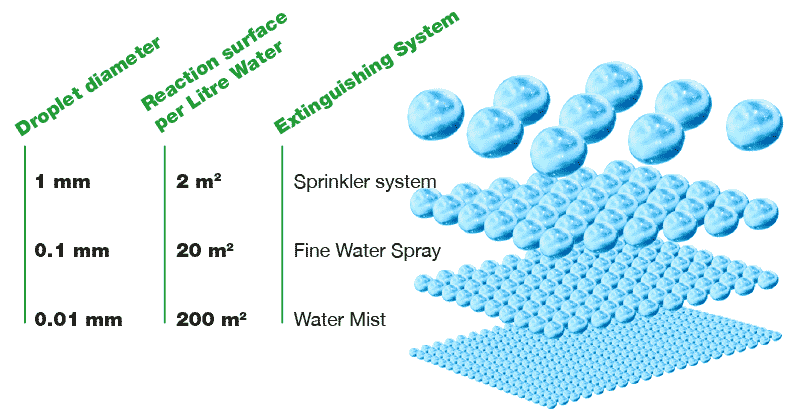What is a watermist system?
Watermist is a water spray for which the cumulative volumetric distribution of water droplets is less than 1000 μm (1mm) within the nozzle operating pressure range.

The use of watermist technology to safeguard building inhabitants and assets has gained popularity over the last 30 years. Watermist does this by maximising the efficiency and effectiveness of droplet deployment. The methodology varies depending on both the manufacturer and the application, from the nozzle design, appearance, spacing, activation method, location to orientation.
Watermist is ‘application and manufacturer specific’ and each particular hazard or occupancy requires its own very specific design which is detailed in the manufacturer’s DIOM (Design Installation Operation and Maintenance manual). It is therefore not possible to design a mist system simply by reference to one of the various Standards available - unlike sprinkler systems where reference only to BS EN 12845 or BS 9251 may suffice. For watermist, the DIOM is the “application and manufacturer specific design instructions” while the standards per se list the performance requirements of systems independent of manufacturer and across applications.
Definition of a watermist system
An automatic fire suppression distribution system connected to a water supply, that discharges atomised media where required, that is fitted with one or more nozzles capable of delivering watermist intended to control, suppress or extinguish fire.
Read more - What is the history of water mist for fire suppression?

